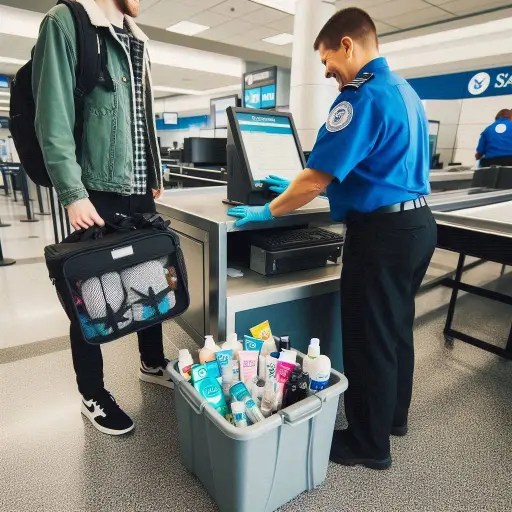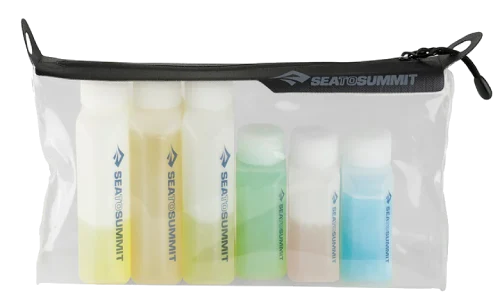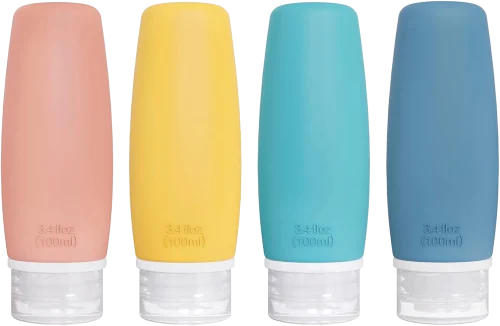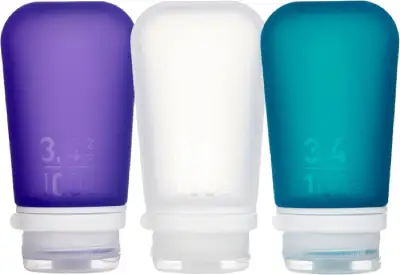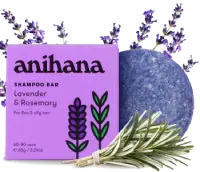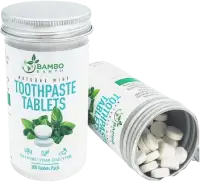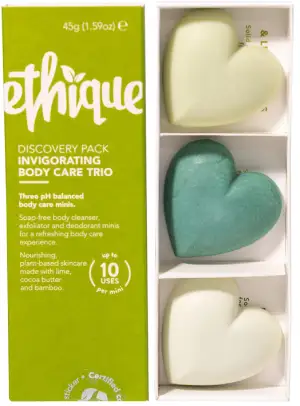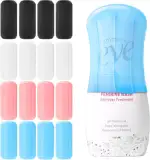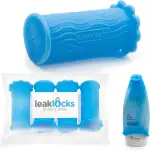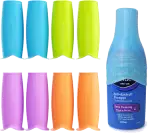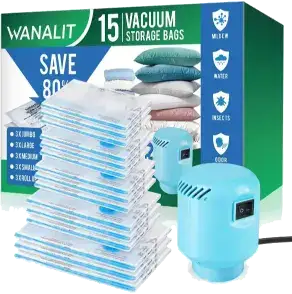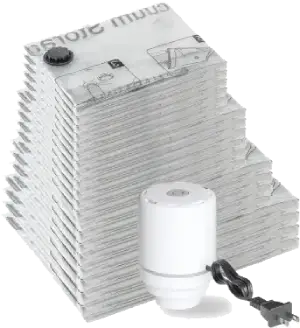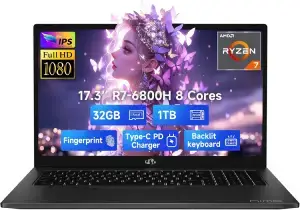Learning how to pack liquids for a flight can feel like a balancing act—keeping your favorite products safe from spills while staying within TSA rules. Will that shampoo bottle survive the journey? How can you prevent a leaky disaster in your luggage? We’ll cover 11 smart strategies to keep your liquids secure, organized, and mess-free, making sure they get to your destination as smoothly as you do.
Strategies on How to Pack Liquids For a Flight
1. Stick to TSA 3-1-1 Rule for Packing Liquids For a Flight
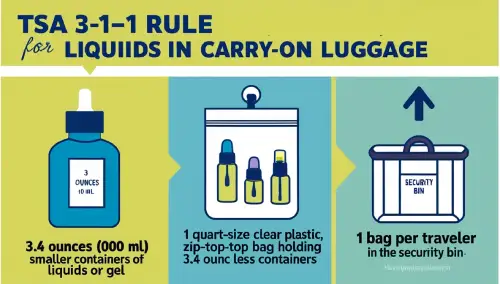
The TSA 3-1-1 Rule is essential for packing liquids in your carry-on luggage. Here’s what you need to know.
TSA 3-1-1 Rule Breakdown:
- 3 – 3.4 ounces (100 ml): Maximum size for each liquid container
- 1 – 1 quart-sized bag: All containers must fit in a single clear, plastic, zip-top bag
- 1 – 1 bag per passenger: Each traveler is allowed one quart-sized bag of liquids
How to follow the TSA 3-1-1 Rule:
- Use containers of 3.4 ounces (100 milliliters) or less for all liquids, gels, and aerosols.
- Place all these containers in a single, clear, quart-sized plastic bag.
- Limit yourself to one bag per passenger.
- Present this bag separately from your carry-on baggage at the security checkpoint.
By following these guidelines, you’ll ensure a smooth and hassle-free experience at airport security when packing liquids for your flight.
2. Invest in Travel-Sized Containers
Staying within the TSA’s liquid limits doesn’t mean you have to leave your favorite products behind. Travel-sized containers are your best friend for packing just enough shampoo, conditioner, or lotion for your journey. When transferring liquids into these containers, be sure to label them clearly—there’s nothing worse than mistaking body wash for shampoo mid-flight. Look for leak-proof options like the Humangear GoToob or Sea-to-Summit for added peace of mind.
3. Swap Liquids for Solid Alternatives
For hassle-free packing, consider swapping liquids for solid alternatives. These products skip TSA’s liquid limits and eliminate the risk of spills. Here are some top solid alternatives to consider:
- Shampoo Bars: Long-lasting, compact, and perfect for all hair types.
- Powder or Tablet Toothpaste: Lightweight and tube-free—just sprinkle, or chew, brush, and go.
- Deodorant Sticks: No leaks, no fuss; solid deodorants work just as well as liquid ones.
- Bar Soap: A simple, effective swap that doesn’t count toward your liquid quota.
- Lotion Bars: Hydrate without worry; solid lotion bars keep your skin soft without breaking TSA rules.
By choosing solid options, you simplify your packing process while reducing plastic waste and environmental impact. Give them a try on your next trip!
4. Use the Plastic Wrap Technique
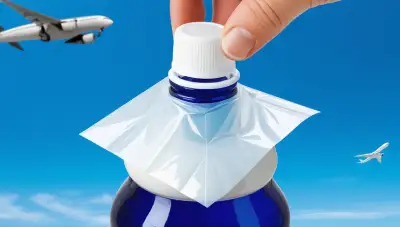
This simple hack can save you from messy leaks mid-flight:
- Unscrew the cap of your liquid container.
- Place a small square of plastic wrap over the opening.
- Screw the cap back on securely.
That extra barrier seals in your liquids, keeping them safely inside the bottle—even if the air pressure changes during the flight. It’s a quick, easy way to add extra protection and peace of mind when packing your toiletries.
5. Don’t Fill or Overfill Bottles
Air pressure changes during a flight can cause liquids to expand or contract, increasing the likelihood of leaks. To avoid this mid-flight mess, follow these tips:
- Don’t Pack Full Bottles: Leave about a quarter of the bottle empty to allow room for liquids to expand.
- Avoid Overfilling: Overfilled containers are more prone to bursting open when pressure builds up. Leave some extra space at the top to allow for expansion.
By preparing your liquids thoughtfully, you can minimize the chance of leaks and enjoy a smoother travel experience.
6. Secure Lids with Tape
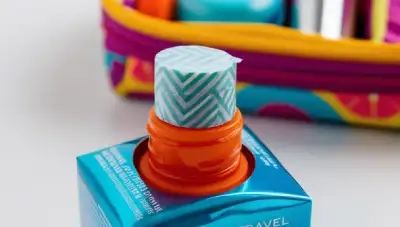
For an extra layer of leak protection, tape the openings of your travel-sized products that are still in their original packaging. This simple trick adds a barrier against accidental spills. Here’s how:
- Place tape over the bottle’s opening before securing the cap tightly.
- Wrap another layer of tape around the cap for added security.
This easy hack acts as a safety net, that even if the cap loosens during travel, your liquids remain contained!
7. Swap Pump Tops for Screw Caps
Pump tops can be unreliable under pressure, often leading to leaks. To avoid issue, consider swapping them out for screw caps, which create a tighter, more secure seal. This quick change adds an extra layer of protection and peace of mind during your flight.
8. Use Rubber Bands
For an extra layer of security, secure flip-top lids with rubber bands. This simple trick prevents accidental openings and minimizes the risk of leaks. Here’s how to do it:
- Wrap a small rubber band around the flip-top lid, ensuring it is snug enough to hold the lid in place.
- Check the seal before packing to ensure it’s secure.
This small addition can go a long way in keeping your liquids contained during travel.
9. Double-Bag for Extra Protection
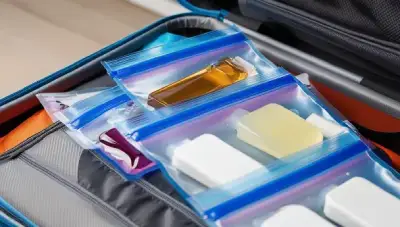
To minimize the risk of messy spills, use a double-bagging method. Place each liquid item in its own individual ziplock bag, then group them into a larger bag. This two-layer barrier ensures that if one container leaks, it won’t affect the rest of your luggage. It’s an easy and effective way to add security to your liquids.
10. Use Specialized Leak-Proof Products
Invest in specialized leak-proof products like LeakLocks Toiletry Skins. These elastic sleeves fit snugly over bottle lids, providing an extra layer of protection to prevent accidental openings during travel. By using these innovative solutions, you can travel with confidence, knowing your liquids are secure and leak-free.
11. Use Vacuum-Sealed Bags for Extra Protection
For ultimate protection, pack liquid containers in vacuum-sealed bags. This technique minimizes the effects of pressure changes during flights.
Practicality at Security: Choose vacuum-sealed bags that allow for easy access and resealing at security checkpoints. Opt for designs that enable quick opening and closing without needing to unpack everything, ensuring a smooth and hassle-free experience.
Tips For How to Pack Liquids For A Flight
- Opt for a Sturdy, Reusable Bag: Choose a high-quality, reusable bag with a sturdy zip closure. A strong bag can better withstand pressure changes and prevent leaks
- Arrange Items Vertically: Organize liquids vertically to maximize space and improve visibility. This method helps in keeping the items secure and organized during travel.
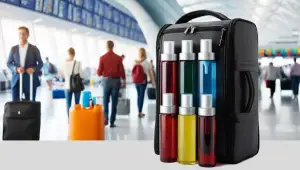
- Prioritize Essential Liquids: Pack only the liquids you truly need. This minimizes the risk of exceeding TSA limits and reduces clutter in your bag.
- Group Similar Items Together: Grouping similar products, such as skincare items, simplifies packing and unpacking. This organization can streamline your travel experience and make it easier to find what you need when you arrive at your destination.
- Open Containers Slowly After Landing: This tip is crucial for preventing spills due to pressure changes during the flight. Opening containers slowly allows any built-up pressure to release gradually, reducing the risk of leakage.
- Check Containers During Layovers: Checking liquid containers for leaks during layovers is a practical tip that can help address any issues before continuing your journey. This proactive approach can save you from messy surprises later on.
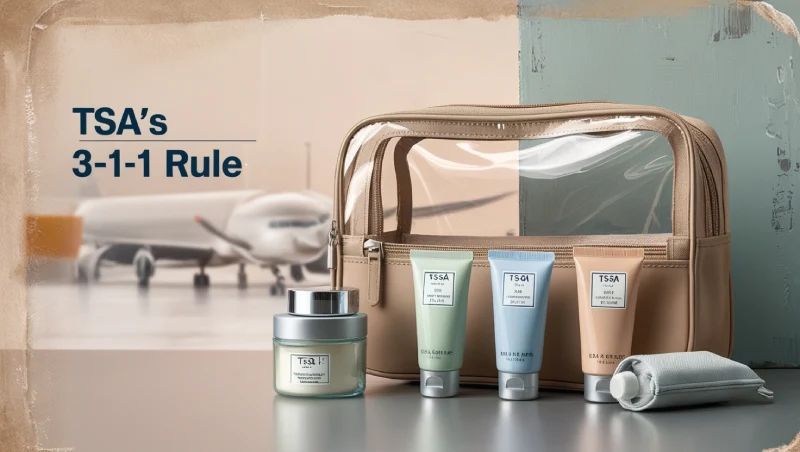
FAQs On How to Pack Liquids for a Flight
Q: Can I bring a water bottle through security?
A: Empty water bottles are allowed through security. You can fill them at water fountains after passing through the checkpoint.
Q: Are there restrictions on packing liquids in checked baggage?
A: Generally, there are no quantity restrictions for liquids in checked baggage. However, some items (like alcohol over 140 proof) may be prohibited.
Q: How should I pack liquid makeup for a flight?
A: Liquid makeup should be in containers of 3.4 ounces or less and placed in your quart-sized bag. Consider using solid alternatives like powder foundation or stick concealer.
Q: Can I bring ice packs in my carry-on?
A: Frozen ice packs are allowed if they are completely frozen when passing through security. Partially melted ice packs are subject to the 3-1-1 rule.
Q: What should I do if I need to bring more liquids than allowed in my carry-on?
A: If you need to bring more liquids than allowed in your carry-on, pack them in your checked luggage or consider purchasing them at your destination.
Final Thoughts
Mastering how to pack liquids for a flight is an essential skill for any traveler. By understanding airline regulations, utilizing smart packing strategies, and exploring innovative alternatives, you can ensure a stress-free journey through airport security. Remember to always check the latest guidelines before your trip, as regulations may change. With these tips and tricks, you’ll be well-prepared to handle your liquid packing needs for your next adventure in the skies.
Sources
Transportation Security Administration – TSA Rules
Transportation Security Administration – What Can I Bring?
Stack Exchange Physics – Atmospheric pressure changes on plastic bottle containing a liquid

